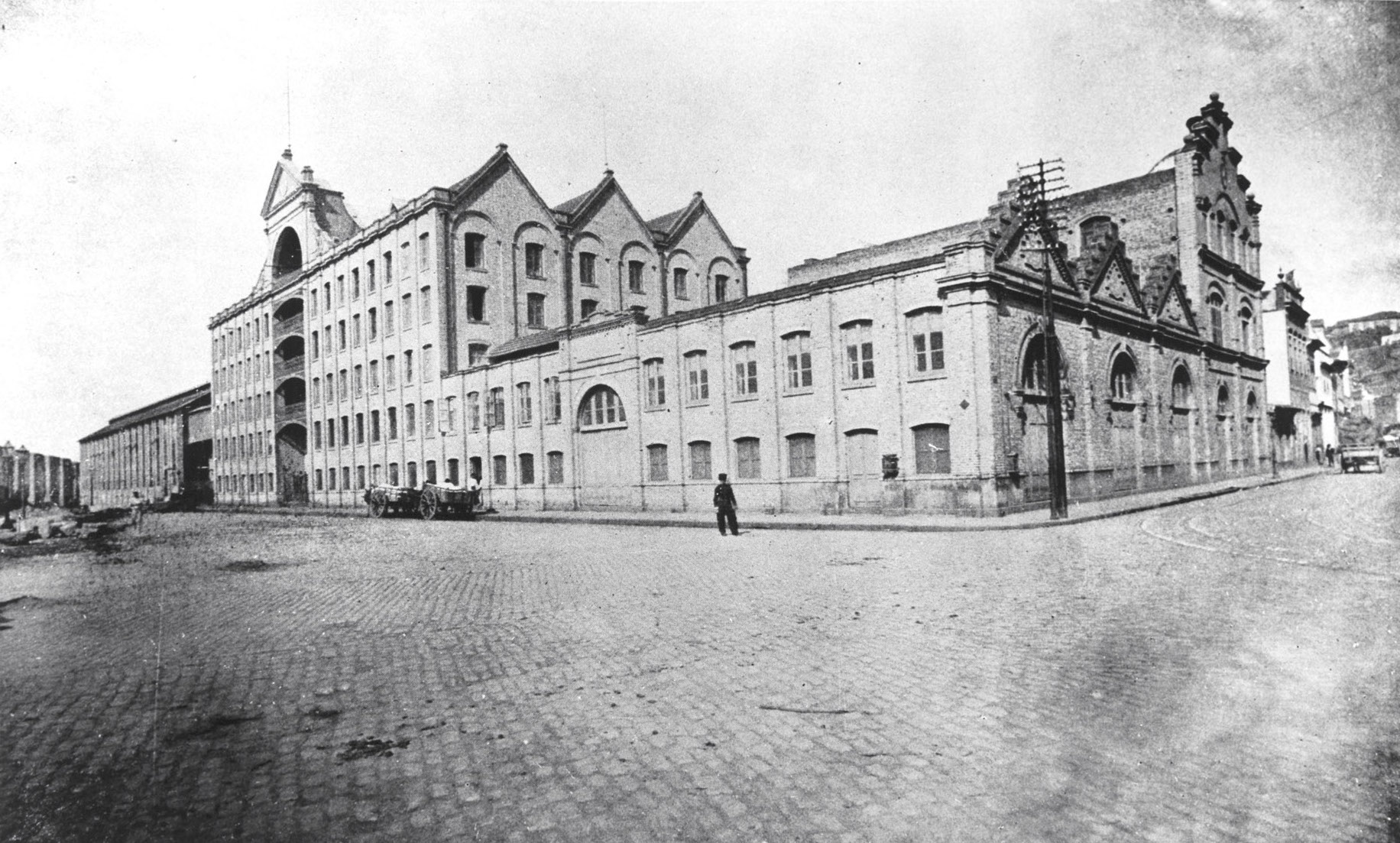Maria Pace Chiavari
Architecture x Technology

Technological innovations in wheat grinding processes are reflected in the construction designs of modern mills.
In contrast to the past – when buildings intended for this type of use were similar to rural homes – the requirements imposed by the new organization of work are mirrored in the magnitude of these establishments. These premises house the articulated machinery that grinds the flour, the silos storing raw materials, the spaces set aside for different production stages – like cleaning and bagging – and the Administration offices.
At that time, the link between industry and architecture was among the most widely argued and controversial topics in the lively discussions of European architects.12 Initially, ironwork seemed to dominate the architecture of the earliest industrial buildings. This led to the important roles played by other materials (like earth, wood and cement) being forgotten. But once solid brick fabrication had been perfected, it was widely used on the façades of industrial buildings throughout the UK, becoming a recognizable feature of the Victorian style.
In both Europe and the Americas, it was common for industrialized goods shipped out from England to arrive complete with architectural designs making use of bricks in different ways. The Stucky mill in Venice13 is among the most admired examples of this happy pairing of bricks and industry.
During the late XIX century and early XX century, there were two mills in Brazil based on British models: the Moinho Fluminense in Rio de Janeiro, and the Moinho Central Matarazzo in São Paulo.14
In 1876, construction began on the Moinho Inglês, which was one of the first flour mills in Brazil.15 The selected site was on the shoreline, at the foot of the Morro da Saúde hill between the Gamboa and Saúde districts, with the latter once called the Saco do Valongo inlet.16
Based on the architectural design drawn up by British engineers, the building followed the latest structural logic of its times, in order to endow it with the highest possible production capacity. [IV]

Its intrinsic qualities were enhanced by the leading role assigned to this venture by its investors, as a way of showcasing the sophistication of British technology. The intention was to gain the trust of the Brazilian Government, in order to gain support for the restructuring project that wants to upgrade the Port of Rio de Janeiro. Early in the XX century, a German firm called Herm Stoltz built another flour mill that was to compete with the Moinho Fluminense: the Moinho Santa Cruz, located at Ponta d’Areia in Niterói, on the other side of the Guanabara Bay.
The advantage of the Moinho Fluminense mill over its competitors was its conceptualization process. Although the other ventures started out large, designed to produce as much as possible within their industrial structures, they were short-lived. In contrast, the Moinho Fluminense mill grew progressively, with the history of its development extending through its 130 years in operation.
[IV]
Grain Grading and Transportation
The new wheat flour grading system is based on grains of different sizes, using sets of jig screens and rotating sifters to separate the grains by size. This divides the flour into different types, each sent to the corresponding silo for storage and then bagging for sale. The horizontal sections of this route processing wheat into different grades of flour are fitted with conveyor belts, with bucket hoists for raising and lowering the materials between levels.

